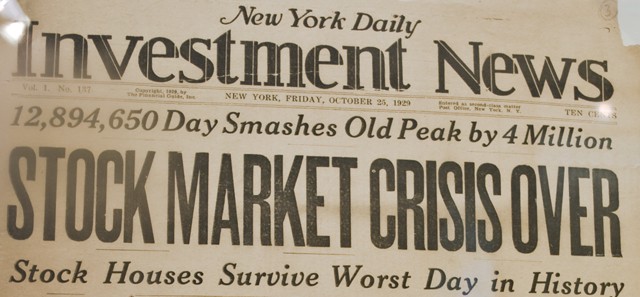How to Choose Investments for Retirement

Why you need to know this: Because you should know what stocks, bonds, and mutual funds are so you can make the right investments and be a rich old person.
So you’ve read this thing on how compound interest will make you rich one day, and decided to open an IRA. You should be proud of yourself. I am proud of you!
So now you get to the fun part where you invest in your IRA and watch your money grow. But first some basics on what you’re investing in.
Stocks: A share of stock is a tiny piece of a publicly-held company. Stocks are risky, which means bigger returns or losses on your money, depending on how your stocks are performing in the market. The more stocks you own, the more aggressively you’re investing. Remember, it’s common to invest aggressively when you’re young, and more conservatively as you age and near your retirement. You can invest more conservatively by investing in bonds.
Bonds: A bond is a loan from an investor to an entity (companies, cities, states, U.S. and foreign governments, etc.), which uses the loan to finance projects. These entities pay interest rates on these loaned funds. Bonds are considered a safer bet than stocks.
Mutual Fund: A mutual fund is what you’ll be investing in, and they’re generally diversified, meaning the fund’s portfolio contains a mix of stocks, bonds, and other assets (i.e. real estate). You’ll want to make sure the funds you are investing in have a broad mix, though you can totally choose more stocks, if you want to be aggressive.

Here’s what you should know before putting your money into a fund:
Minimum Investment: Some funds require a minimum amount of money for you to start investing, say $1,000 or $3,000. Don’t sweat it so much. There are other funds that don’t require a minimum dollar amount.
Expense Ratio: This is what it will cost you to invest in a fund, and is generally shown as a small percentage of the assets in a fund. When choosing funds for the first time, you should probably make sure the expense ratio is under one percent.
Load: When you start investing, you’re going to be buying and selling funds. A load is what it will cost you to do these transactions, so make sure there aren’t any loads when choosing a fund (it should say: “none”).

What to use when you’re researching funds: Morningstar.com — which will tell you all about diversification, minimum investments, expense ratios, and loads. Overviews are free to check out.
Overwhelmed and need suggestions on where to start? Here are two recommendations:
Vanguard’s STAR fund: This is the one fund that Morningstar’s director of personal finance Christine Benz recommends to start with. Mix: 60 percent stocks, and 40 percent bonds. Expense Ratio: 0.34 percent. Load: none.
Vantagepoint Model Portfolio Long-Term Growth fund: I asked financial planner Jay Hutchins for a recommendation for a solid fund young people should get when starting out, and this was his suggestion. Expense ratio: 0.96 percent. Load: none. This is an aggressive fund that is largely made up of stocks, which is good for young investors.
Also helpful: The Best Mutual Funds according to the U.S. News Mutual Fund Score.
Photo credit: Flickr/Wagner T. Cassimiro “Aranha”
Support The Billfold
The Billfold continues to exist thanks to support from our readers. Help us continue to do our work by making a monthly pledge on Patreon or a one-time-only contribution through PayPal.
Comments